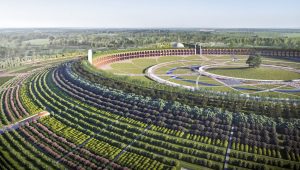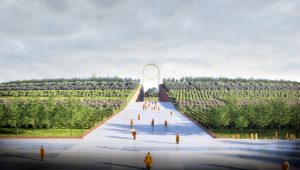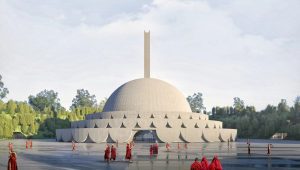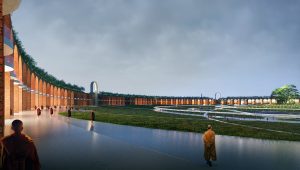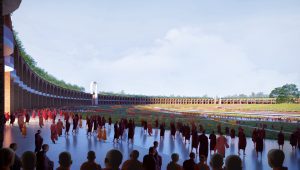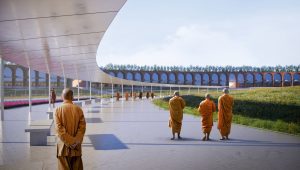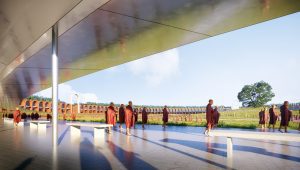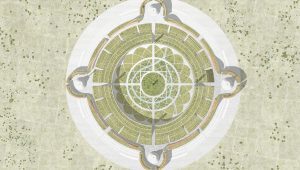Images
Project
Stefano Boeri Architetti
Year
2023-2024
Location
Lumbini, Nepal
Typology
Masterplan, Public Space, Landscape Enhancement
Services
Masterplan
Stefano Boeri Architetti
Partner: Stefano Boeri, Yibo Xu, Pietro Chiodi, Francesca Cesa Bianchi, Marco Giorgio
Design Team: Cecilia Picello (Project Director), Mohamed Hassan Elgendy, Xu Lyubao
The masterplan for the Ramagrama Stupa, designed by Stefano Boeri Architetti in Lumbini, Nepal, originates from the goal of enhancing one of the most significant representative places in the Buddhist world.
Ramagrama is the municipality situated in Parasi district in western Nepal on the banks of the Jharahi River, just 50 kilometers east of Lumbini (the birthplace of Buddha). One of Buddhism’s most important historical, cultural and religious sites is located here: the Ramagrama Stupa is in fact the last site housing part of Buddha’s relics to remain intact.
The Ramagrama Stupa, dated back to the earliest period of the Buddhist tradition, presents itself today as a green mound, crowned by a majestic Bodhi Tree which integrates four distinct plant species, reflecting the unity and harmony of Buddhism’s core teachings.
Several organizations and Buddhist communities have committed themselves to the preservation and sustainable enhancement of the Ramagrama Stupa, with the objective in mind of conserving this site of extraordinary historical and cultural significance, in accordance with the standards set by UNESCO for World Heritage Sites.
Stefano Boeri Architetti’s masterplan in coherence with the historical and spiritual significance of the ‘stupa’ – the sacred structure housing Buddha’s relics – aims to enhance Ramagrama’s role both as an archaeological site and as a place of prayer, meditation and peace. The project envisions a large Peace Meadow around the sacred Bodhi Tree, a sacred tree of the Buddhist tradition characterised by a high level of biodiversity, and the still intact Stupa of Buddha, maintaining a form of respectful distance to make the archaeological remains accessible for future researches.
In order to enhance the perception of uniqueness of the place, the project proposes a gradual approach to the sacred site, providing a succession of spaces that emphasise the symbolic significance of Ramagrama Stupa, starting from the four monumental portals that identify the directions of access, up to the central hill.
In line with Stefano Boeri Architetti’s design philosophy of integration between living nature and architecture, the masterplan includes a central element – the ‘Peace Meadow’ – conceived as an open space for contemplation, with a design that recalls the mandala and the symbolic role of the place. The large central Meadow, 600 metres in diameter, is surrounded by a circular system of facilities, cultural spaces and areas for meditation and prayer covered by the Biodiversity Ring Garden.
The Biodiversity Ring Garden is designed as a slope hosting 80.000 plants of 70 different species, with plant varieties selected from native species to the Terai plain, the birth place of Buddha, and ending in a circular elevated pathway shaded by trees, in order to offer a full overview on Ramagrama Stupa. Considering the local climatic and environmental conditions, special attention was given in the project to the issue of shading the pedestrian paths in order to guarantee adequate use of the space by monks and visitors in all seasons and throughout the day.
In terms of material choices, the new Prayer, Meditation and Peace Center is built using local materials, aiming to reduce environmental impact, recalling indigenous brick production and enhancing the architectural tradition of the site.
The project for Ramagrama Stupa represents an extraordinary challenge: to create a center for prayer, meditation and peace in one of Buddhism’s holiest sites, respecting the very rich symbolism of Buddhist scriptures, to propose a project that will become one of the most significant on cultural heritage in Nepal.

